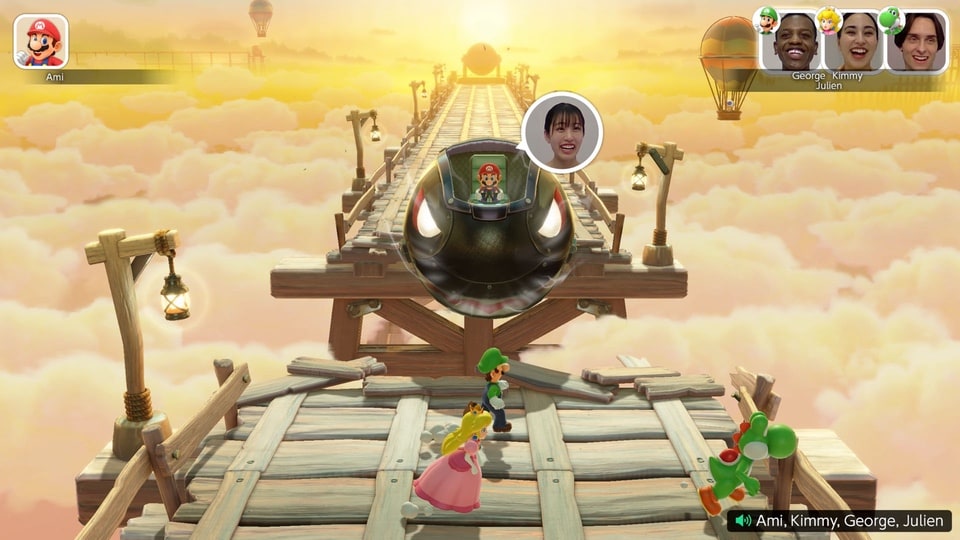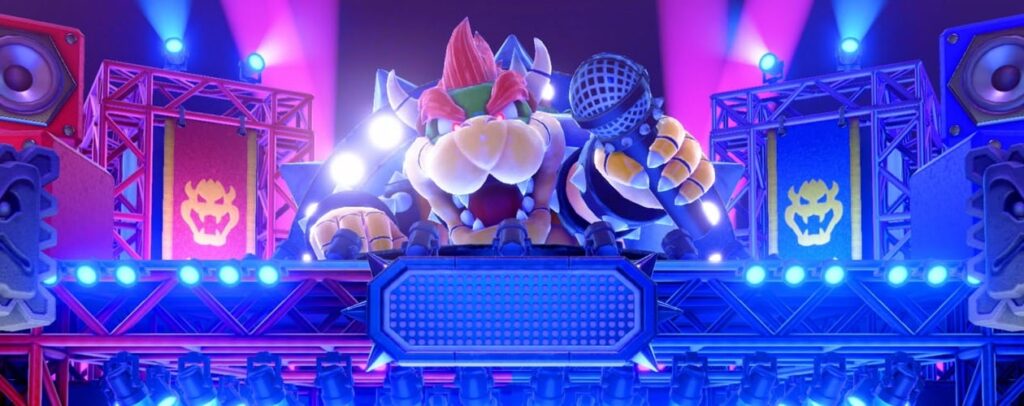Nintendo knows that gaming is a social activity, but as gaming has moved increasingly online, they haven’t consistently kept pace with changing habits. The Switch 2, though, is the most social Nintendo platform we’ve ever had. GameChat and GameShare are two new features built into the console’s very fabric, bringing family and friends together to play through innovative multiplayer, multi-console streaming and, well, the slightly less timely ability to chat with each other.
Mario Party, then, is the perfect game to showcase the Switch 2’s new features. Alongside the Switch 2 camera peripheral, the now excessively titled Super Mario Party Jamboree – Nintendo Switch 2 Edition + Jamboree TV DLC is here to make group gaming more social, vibrant, and silly, while emphasising the human connection. As you crush your family in a minigame melee, of course.
Mario Party Jamboree was a great return to form for Nintendo’s long-running digital boardgame, and it did so by focusing on the basics. The central mode once again sees you travel around the various boards, attempting to earn more Stars than your opponents through canny use of special items, thoughtful route planning around the sometimes-convoluted multiple pathways and battering everyone in the different minigames that punctuate each round.
For the Switch 2 Edition, the main game has been given a scrub-up, but it’s the added social systems of the game and the Switch in general that bring the biggest changes. Similar to Mario Kart World, you can see your friends while playing if you have cameras attached and enabled. Sure, the Switch 2’s built-in microphone and GameChat makes talking to your friends easier makes this easier than ever, but there’s something just that bit more personal and immediate by being able to see them as well.

The camera is capable of zooming in on up to four people playing in the same space, and you can gurn, smile, cry or, well, make rude gestures when things don’t go your way. My 9-year-old son believes that this is the best new feature, purely because it allows you to have your head next to your avatar and you can make silly faces in it. It adds a level of life and humour into the game that actually overrides some of Mario Party’s slower moments, helping you breeze through the 90+ minutes of a full game session.
Through the main Mario Party game it is, fundamentally, just a camera, but the Jamboree TV DLC makes it an integral gameplay tool. There are 20 new minigames here that utilise the Switch 2’s impressive new features, with a variety of Eye-Toy-like CameraPlay minigames, microphone-driven tasks, and a batch that utilise the Joy Con 2’s mouse controls. They show some of the system’s huge potential, while highlighting some of its weaker elements as well.
There’s three core modes to Jamboree TV, with the first being Bowser Live, which sees you participating in a live show hosted by Mario’s nemesis, where the losers will be burned to a crisp by his fiery breath. You choose to focus on either camera or microphone games – though oddly, not both at the same time – and fight it out through three rounds. Camera-led games might see you trying to stack Goombas on your head, or repeatedly hammering a ? block for coins by punching the air, while microphone ones have you shouting at your console to move objects around. You can definitely ruin these for your opponents by shouting at the wrong time, and I can see multiple households descending into chaos because of it.
Bowser Live is a much shorter experience than many of the other Mario Party modes, only taking place across three stages. The third and final game is also something of a disappointment as it’s the same thing every time. At the close, you and your teammate have to shout, holler and hoot to win over Bowser and the crowd, but as a co-op pair, no matter how loud we shouted, we never won, with the AI team soundly beating us. Playing against each other, or as a four, will do away with that, but it’s not a minigame in the true sense, and its repeated use as the closing point of the mode sees it wear thin extremely quickly.
The mouse-led minigames are the clear winners in Jamboree TV, though you’ll obviously need an extra pair of Joy-Con 2 if you want to play with more than two players. Carnival Coaster is the overarching mode for these, putting you on a rollercoaster that’s also an on-rails shooter. You blast Koopas and Para-Biddybuds, as you race down the rails, putting your arms up for a speed boost, before hitting the next minigame.
This batch of mousey minigames have proven to be the Jamboree TV’s highlight, from sorting through emails – any from Bowser go in the trash – to co-op climbing with each player taking control of one springy arm. They showcase just how good the mouse controls are, and they feel fresh, fun and compellingly different to the wider Mario Party canon. Just as with the main game, you can forgo the wider framing of Bowser Live and Carnival Coaster to hop in and out of your favourite minigames, and this is probably the best way to experience the newest additions, with a solid stream of competitive diversions.
GameShare takes Nintendo’s focus on social play to the next level, and here it lets you share the game across multiple players and multiple platforms so that you can all play together from one copy of the game. That includes the original Switch, Switch OLED and Switch Lite, though you’ll only be able to play the main game’s modes, and none of the newer Jamboree TV content when connected to the older generation. It’s the ideal endpoint for the game though, and I can see it helping to drive Mario Party’s popularity to new heights, albeit while potentially selling fewer copies of the game.

